Top Note Taking Methods for Work

From classrooms to boardrooms, notes reign supreme—they tell us what has happened, what needs to happen, and contain everything from doodles to datasets. They’re an effective way to compile shared information, organize your own ideas, and quickly collaborate with colleagues, coworkers, and clients. And while note taking techniques haven’t changed in decades, the way we use and interact with them certainly has. Today, we create them digitally rather than sticking them on the wall behind the desk, and there’s plenty of benefits to our new digital freedom
So, in a digital world, what are some of the reasons to take notes, what are some of the best strategies and methods for note taking, and how can integrated online tools take your notes to the next level?
Write down the thoughts of the moment. Those that come unsought for are commonly the most valuable.
- Francis Bacon
When Should You Take Notes?
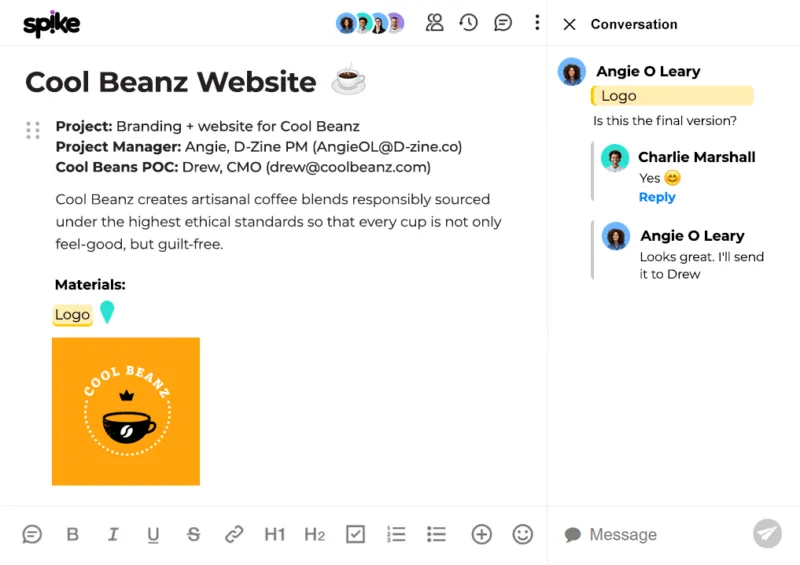
Before taking a single note, you should consider why you want to take notes
- What’s the purpose?
- Do you need to keep it?
- How will you store it?
Answering these questions will help you choose the right method.
Notes Taking Tips — Business Notes
One of the most common reasons for note taking is to keep a record of information as it happens. You probably already do this at school, college, and work (or at least one of them), and while it may have been discouraged to pass notes to your peers at school, it is often mandatory in business, and online notes now allow you to do this with a click of a button.
For this kind of notetaking, you will be looking for a structured, informational, and easy to digest format, sometimes even with legal requirements such as for board meeting minutes or for structured HR meetings.
Who benefits most from well executed business notes?
- Lawyers
- Accountants
- Human Resources Professionals
Notes Taking Tips — Creative Notes
Another common reason for taking notes, especially for those who work in creative industries, is for the formulation, expansion, and development of ideas. Taking notes here is less about recording what is happening, and more about trying to get all the things whipping around your mind onto a page, and then molding them into something that makes sense!
It can often be helpful to include the following
- Text
- Images
- Diagrams
- Drawings
- Color Connections
Notes Taking Tips — Collaborative Notes
Notes taking methods also extend to collaborative notes, helping to keep everyone on a remote team on the same page (quite literally). This is kind of like that old cork board that was hanging in the hallway rather than a single sheet of notes, but since online notes allow multiple people to add to them, as well as encouraging the decentralized distribution of information, a single digital note is now more powerful than a room full of pinboards!
Benefits of collaborative notes
- Keeps remote teams on the same page
- Revision history for accountability
- Real-time collaboration
Note Taking Strategies
While it may seem like a rather simple skill, there are actually several well-established note taking strategies to help you craft sharable, legible, and ultimately useful documents. Let’s take a look at some of the most popular strategies that will help you organise info whether sitting in a lecture, a business meeting, or in front of a screen trying to come up with your next big idea.
The Outline Method
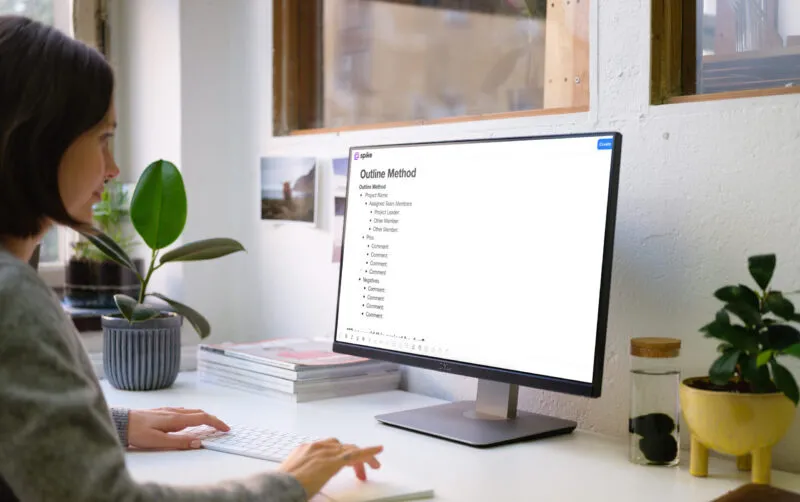
The first note taking method is probably the simplest and, subsequently, the most popular. In fact, it’s so simple and popular you probably already do it without even thinking. It involves breaking down information into large topics and subtopics, often in the form of bullet points.
This is useful in a structured environment (such as a business meeting) when you are trying to focus on clear bits of information that can be turned into action points.
A note taking template for the Outline Method should look something like the below. Download Template
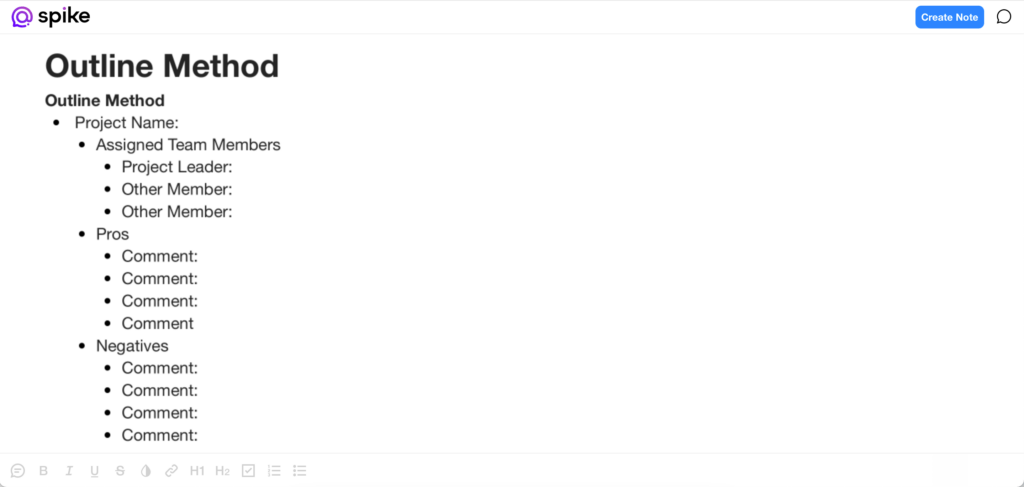
Mapping/Flow Method
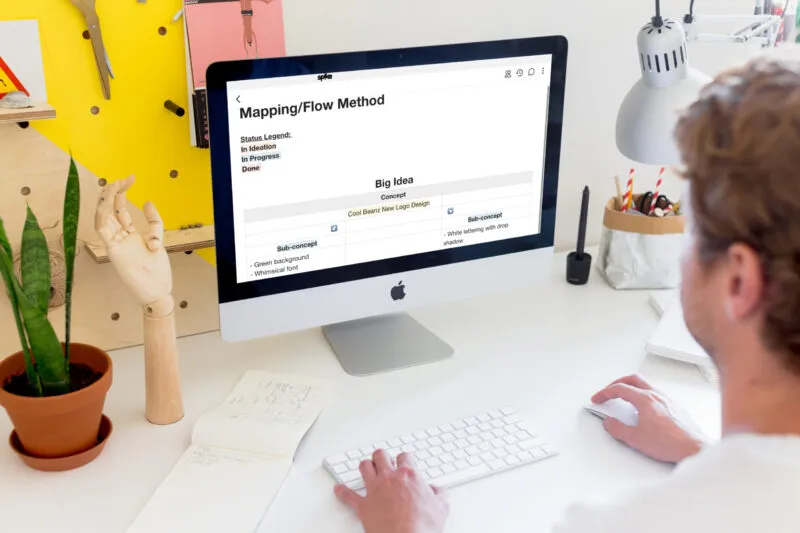
This note taking method is ideal for less rigidly structured topics, after all, a meeting will follow an agenda whereas your creative mind is less likely to do so. Therefore, when we approach notes for things like ideas and creative projects, a map can be far more useful since it allows you to have a central starting point and then work your way out from there.
If on paper, this can be a literal “working outward” from a central bubble or box, but more commonly with digital notes, you can highlight sections with colours, connect images and add comments in order to build out your page in a less rigid, but equally understandable, way. The note taking template for the Mapping/Flow Method should look something like this.
The Charting Method
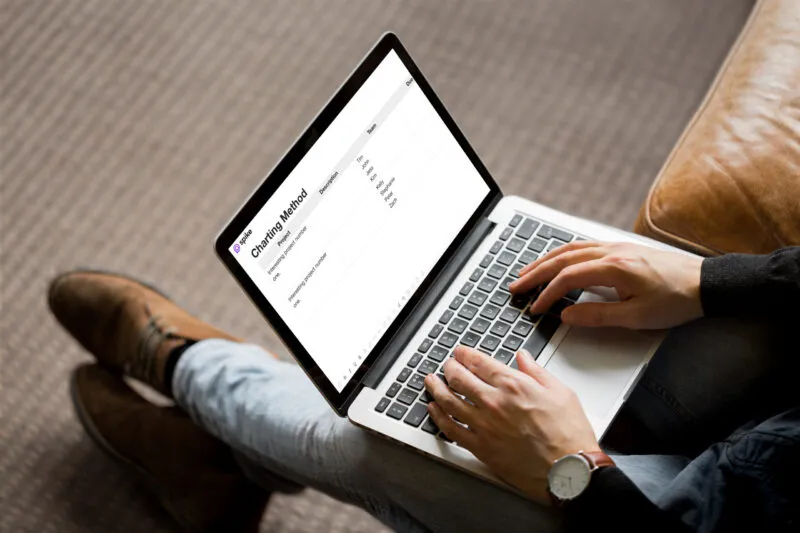
This note taking method is best used when you are confronted with a large amount of information flow that you need to break down in order to more clearly understand it yourself, or if you plan on sharing it with a remote team.
It essentially looks like a table, and could well be a secondary layer of notes that you’ve created from your original, more in-depth notes.
For example, if you had a meeting about new projects, who would be working on them, why, and when they were due, then had to share the core of those notes with your team, it might look something like this.
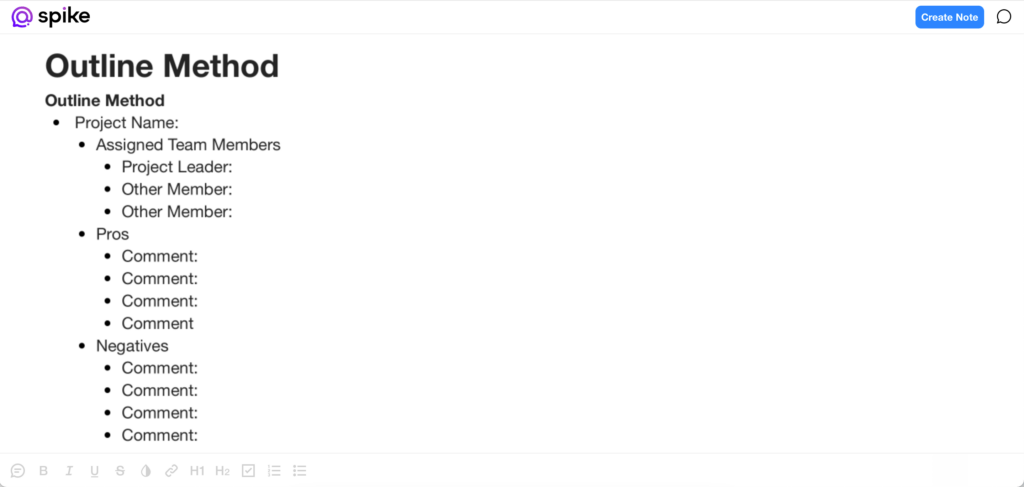
Notes Taking Methods
Now it’s time to decide what information you are actually going to include in your notes. Chances are, you aren’t going to be able to get down everything that you’re hearing, seeing or thinking, so let’s look at the key points that your notes should cover in different scenarios.
First, let’s start with business note taking. Here, we know that the purpose is recording information to keep a record and potentially share with others. In this situation, there’s a good chance we’ll use the Outline Method. And with these two aspects settled, we can make sure our notes include:
-
A heading that outlines the main subject of the meeting
-
The location of the meeting
-
Who attended the meeting and their role within the company
-
The time and date of the meeting
-
The main points, subpoints, and details if needed
With these points covered and using the right note taking strategy, we can be safe in the knowledge that we’ve achieved what’s needed from business meetings.
But what about if we look at creative notetaking? For this, we know our aim is to grow out concepts and develop ideas. Chances are, we’re going to select the less rigid Mapping Method. And now all that’s left is to decide what to include:
-
The core concept/concepts
-
A list of aims for the notetaking session so we have direction
-
Referenced material such as pictures, diagrams or sketches
-
Links to further research material
How Online Notes Take it to the Next Level
Whatever your purpose and whatever your style, the majority of the notes that you take these days will be online, and for good reason. First, when using something like Spike Notes, it’s easy to share notes with everyone on your team – outlined minutes from a business meeting, for example. Additionally, by using online Notes, you also have features such as cloud backups, so there is no more risk of losing sheets of paper, as well as integrated chat for fast and effective feedback when developing out an idea with other people, for example.
For more information on effective note taking as well as other productivity skills, check out the Spike blog or get started with Spike Notes for free.
Gain Communication Clarity with Spike
You may also like
Graphic Designers — Here’s Why You Need Spike Notes in Your Life
Discover the power of Notes for Graphic Designers and push your next project forward with seamless collaboration and communication. Give the app switching a rest with Spike.
How Collaborative Notes Can Boost Teamwork
Want to boost teamwork and productivity? Spike’s team Notes have everything you need to get the job done!
4 Habits to Ramp Up Productivity and Completely Transform Your Freelance Business
Set yourself up for success in the productivity game. We break down habits you can incorporate into your daily life to ramp up productivity—and completely transform your business in the process.
Read More



